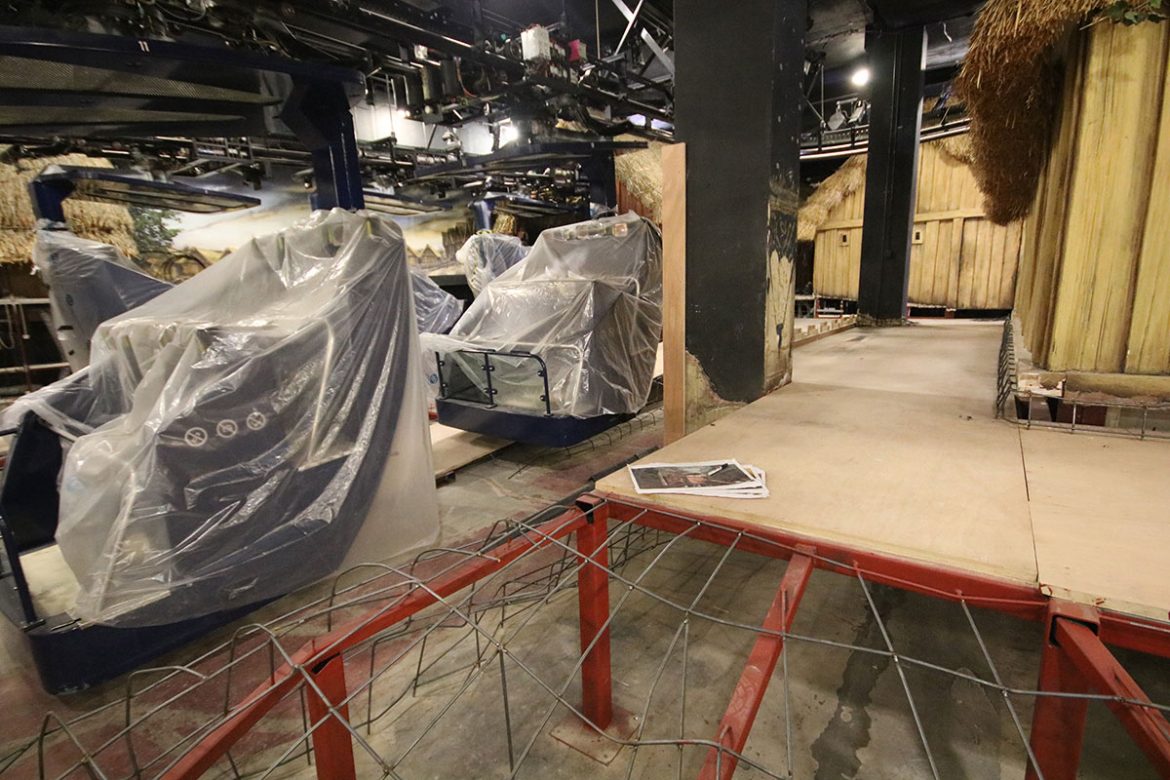When staff at the Jorvik Viking Centre opened for business on December 27, 2015, they had no idea how the day’s events would affect so many people over the next year and beyond.
Water started to enter the basement of the centre from the loading bay door off Piccadilly when the River Foss flooded following heavy rainfall on Boxing Day.
The technical staff managed to create a makeshift flood barrier which held the water back long enough for a team of curators and volunteers to remove all of the irreplaceable artefacts from the underground galleries.
But by the morning of December 28, much of the recreation of Viking-age York was under up to a metre of water.
‘Devastating and unbelievable’

An electric substation which provided power to a number of the stores in the Coppergate Centre had been flooded, so whilst there was no water to be seen at street level, many of the shops were forced to close. Those backing onto the loading bay saw contaminated water flood into their lower floors.
For most, these were storage spaces away from the public eye, but for Jorvik, this area was where Viking city was recreated, built on the actual site and at the level of Viking-age York.
“When we went down there, it was pitch black – no lighting at all, and eerily silent without the familiar hum of air conditioning units,” said Sarah Maltby, director of attractions at York Archaeological Trust (YAT).
“The elevated parts of the recreation were dry, but the lower parts – the entrance to the ride and the quayside – were under up to a metre of water.
“The floors in the galleries were under water – it was a devastating and quite unbelievable scene.”
The scene was shared all around the world, when film crews and journalists, who had come to York to see the devastation on Huntington Road, descended on Jorvik to see the damage for themselves. Messages of support started coming in from all quarters – from the heads of other local attractions to the House of Lords.

However, with all of the artefacts safely transported over to a dry, secure venue, Sarah and her team quickly began planning for what had to happen next.
With no inkling of how long it might take to bring the attraction back into operation, the team started planning how to deal with school groups who had booked New Year visits, and to continue planning the Viking Festival, which was only eight weeks away.
Contingency plans were put in place to use York Methodist Church Hall – across the road from one of Jorvik’s sister attractions, Dig – and groups were contacted to advise of the changing arrangements. The Jorvik team also started work on pumping water out of the basement and assessing the damage.
Thrown away

It became evident fairly early on the huge size of the task to rebuild the centre.
Many of the sets were built on wooden frames, which had been contaminated by water and required replacement, whilst all of the plaster models touched by the flood water – each skilfully hand-crafted – also had to be thrown away.
“Our insurers were helpful,” Sarah said. “We had policies in place to ensure that we could keep all of our staff employed during the closure, distributed around our four other York attractions or working on our educational outreach programmes – and this was crucial to us, as we have such a remarkable knowledge base amongst these staff, they are truly irreplaceable.”

Amongst the supporters were York Museums Trust, York Minster and York Theatre Royal. Each offered space to Jorvil to host some of their collections whilst the Viking Centre was closed; a way of keeping York’s Viking heritage in the public eye despite the closure.
Three exhibitions were quickly assembled and continue to operate at the three venues until the New Year, when artefacts will be returned to Jorvik ahead of the re-opening.
Chance to start afresh

Meanwhile, work continued on the basement attraction, with the designers of the original Jorvik and subsequent redevelopment, Rick Matthews Associates, brought in for their particular expertise and knowledge of the project.
Sarah said:
It meant that when we re-opened, the ‘re-imagined’ JORVIK would surprise and delight visitors as we always had, and be able to attract repeat visitors, as well as new audiences, and continue to play a key role in York’s tourism portfolio.
With a project cost of £4.3 million, and an insurance settlement of £2.83 million, the fundraising challenge for the trust was to raise an additional £1.5 million, from a standing start in January 2016.
“We have been overwhelmed by the fantastic support we have received from so many different organisations, from government bodies, charitable trusts and foundations, local companies and organisations, and of course many, many individuals,” said Sarah.

The trust has raised more than £1 million, and so are well on the way and are able to re-open the re-imagined Jorvik on April 8, 2017.
But there remains a way to go and York Archaeological Trust continues to fundraise the outstanding £314,000.
Sarah said:
We’ve come through an amazingly tough 12 months, but we know that 2017 will be another landmark year for Jorvik – we can’t wait to show people the great new Viking experience that will arise from the floods.
To donate to JORVIK’s fundraising campaign, #CampaignCanute, please visit the Jorvik Viking Centre website
